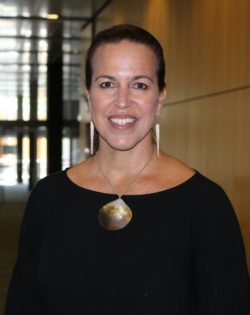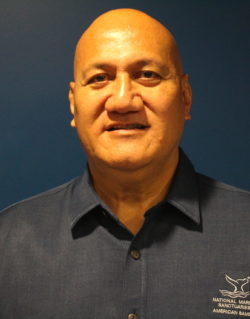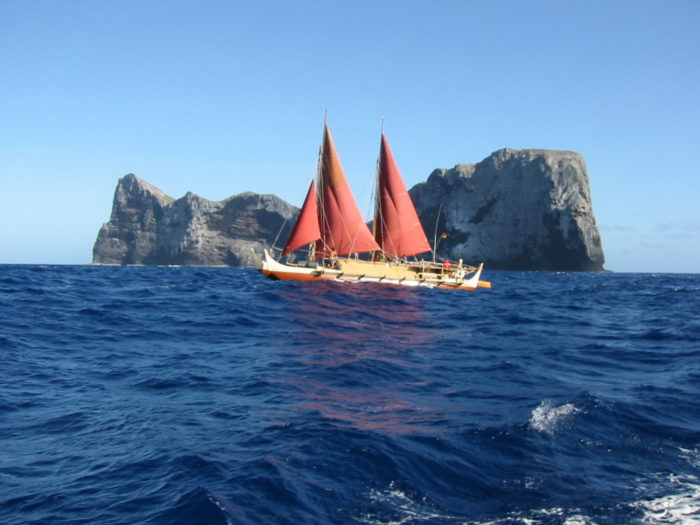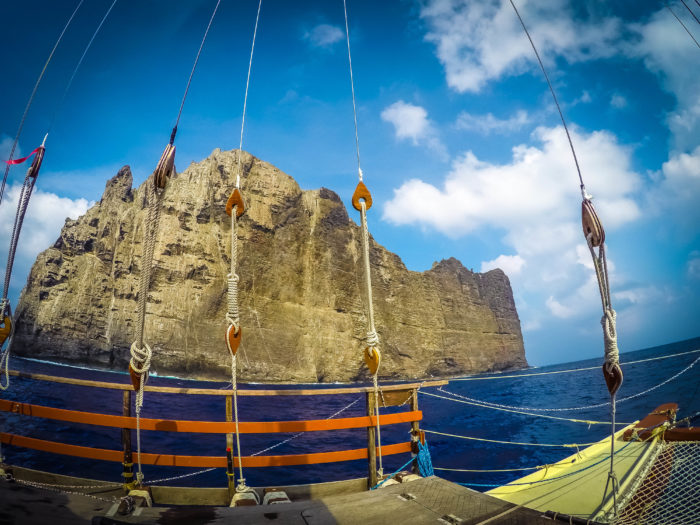Virtual discussion
Blue Beacon Series: Big Ocean Protection
Big Ocean Protection
Our ocean contains a diversity of life. Large marine protected areas (MPA) are an essential tool to conserve marine ecosystems at-scale. In 2000, the establishment of Northwestern Hawaiian Islands Coral Reef Ecosystem Reserve (now part of the Papahānaumokuākea Marine National Monument) launched a movement to establish large-scale MPAs to strengthen the management of our global ocean. Today, there are 33 designated large-scale marine protected areas in 16 nations or territories. These MPAs cover a total of 4.6 percent of the ocean. Notably, many of these MPAs also protect significant cultural resources and engage local communities and Indigenous people in co-management.
Join us on July 15th as we celebrate Papahānaumokuākea’s anniversary with an exciting conversation about marine protection and collaborative conservation!
Join us on July 15th at 7 PM EST/1 PM HST on Facebook Live (alternate stream will be embedded on this page.)
About our participants
 Aulani Wilhelm, Senior Vice President for Oceans at Conservation International
Aulani Wilhelm, Senior Vice President for Oceans at Conservation International
Aulani Wilhelm’s work bridges culture, community and science to drive innovations in ocean conservation.
Aulani has played a pivotal role in shaping the emerging field of large-scale ocean conservation, leading the design and establishment of the Papahānaumokuākea Marine National Monument in Hawaiʻi, and as founder of Big Ocean, a network of the world’s largest marine managed areas.
Prior to joining Conservation International, she was director of ocean initiatives for NOAA’s Office of National Marine Sanctuaries, and a social innovation fellow at Stanford University. She founded Island Water, a social venture to provide clean water and reduce plastic pollution on islands, and the Design4Nature Collective, a network of professionals trained in design thinking who apply methods of problem-solving for nature. She holds a master’s degree from Stanford University and a bachelor’s from the University of Southern California.

Atuatasi Lelei Peau, Acting Superintendent for the National Marine Sanctuary of American Samoa
Liaise relationships with the American Samoa Government in Marine/Ocean conservation. Holds a Master’s Degree in Urban and Regional Planning from the University of Hawai’i at Manoa and a Bachelor’s Degree in Political Science from UCLA. He has more than 30 years of service from the American Samoa Government as well as international and regional partnerships from service on the US Coral Reef Task Force (USCRTF) and MPA Federal Advisory Committee before joining the sanctuary in 2014. He holds a High Talking Chief Title of “Atuatasi” from his village of Fagasa, American Samoa.

Keola Lindsey, Hawai`i Island Trustee, Office of Hawaiian Affairs
Keola Lindsey has nearly two decades of experience working with Hawaiian communities and a diverse range of stakeholders throughout the State of Hawai`i on complex natural and cultural resource management issues. He has held several positions with the Office of Hawaiian Affairs (OHA), a semi-autonomous state agency and was elected in 2020 to serve a four-year term as the Hawai`i Island Trustee. The nine-member OHA Board of Trustees is responsible for setting policy and managing the agency’s trust. From 2012-2019 he oversaw OHA’s day-to-day co-management responsibilities in the Papahanaumokuakea Marine National Monument (PMNM), ensuring regular Native Hawaiian community involvement and full consideration of cultural issues and traditional and customary rights in permit application review, planning and policy implementation. He was the agency’s lead in negotiating with the U.S. Departments of Interior and Commerce, the State of Hawai`i and other stakeholders to finalize a 2016 memorandum of agreement that placed the Native Hawaiian voice at the highest level of decision making in PMNM. He earned his BA in Hawaiian Studies and MA in Public Administration from the University of Hawai`i and lives with his family in Kawaihae on the Island of Hawai`i.
About Papahānaumokuākea Marine National Monument

Photo credit: Nāʻālehu Anthony
History was made in 2016 when President Barack Obama announced the four-fold expansion of Papahānaumokuākea Marine National Monument, making it the largest marine protected area in the Northern Hemisphere. Papahānaumokuākea protects one of the most iconic ocean environments in the world, preserves Native Hawaiian traditions for future generations and safeguards the remains of those lost during World War II’s Battle of Midway.
Its extensive coral reefs are home to thousands of marine species, some found nowhere else in the world. Monument residents include endangered Hawaiian monk seals, sea turtles, whales, dolphins, 14 million seabirds, sharks, billfish, tuna and four species of duck unique to the region.
The destination’s role in maritime and cultural heritage is equally significant. With the highest density of sacred sites in the archipelago, it is closely tied to the Hawaiian peoples’ history. Within the boundaries are more than 60 known shipwreck sites spanning centuries as well as Midway Atoll, where the US forces irreparably damaged the Japanese fleet in the famous WWII battle.
Papahānaumokuākea was inscribed as a UNESCO World Heritage site in 2010, the first mixed-use world heritage site in the United States, and one of only 28 in the world at the time. The mixed-use inscription acknowledges both the unique natural and cultural features of the marine national monument, and the interconnectedness of those resources.
Voices of Papahānaumokuākea
The new documentary film Voices of Papahānaumokuākea, sharing the perspectives of eight Native Hawaiians involved in establishing protections for the Northwestern Hawaiian Islands, recently premiered on local Hawai’i television. The documentary offers insights into indigenous values and philosophies deeply embedded in native worldview and the relationships between people and place. The Office of Hawaiian Affairs created Voices of Papahānaumokuākea to celebrate the 15-year anniversary of the monument’s official designation.
More Resources

Photo by: Brad Ka‘aleleo Wong/Office of Hawaiian Affairs
Official Papahānaumokuāea Marine National Monument (PMNM) website
Celebrating 15 years of Papahānaumokuāea Marine National Monument
President Bush Establishes Northwestern Hawaiian Islands National Monument – June 15, 2006
Presidential Proclamation from President Obama on Papahānaumokuāea Marine National Expansion – August 26, 2016
Office of Hawaiian Affairs named co-trustee of PMNM – August 26, 2016
Mai Ka Pō Mai – Native Hawaiian guidance document for the management of PMNM
About the Blue Beacon Series
The National Marine Sanctuary’s Blue Beacon Series aims to bring to light the ocean and Great Lakes’ biggest challenges through panels, lectures, and film screenings hosted around the country in order to build communities of support for marine protected areas. This series builds on the momentum of Capitol Hill Ocean Week, the nation’s premier conference on ocean and Great Lakes policy issues by bringing these important conversations into locally relevant contexts. For more information, visit marinesanctuary.org/bluebeacon.
Questions?
Please contact Jamie Smith, jamie@marinesanctuary.org or Ben Charo, ben@marinesanctuary.org
